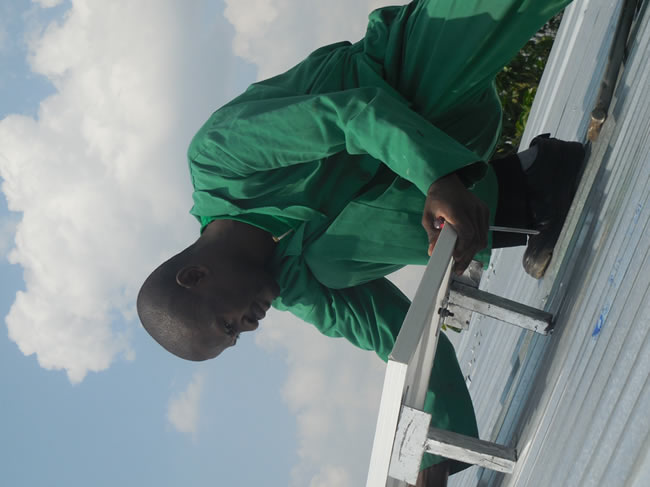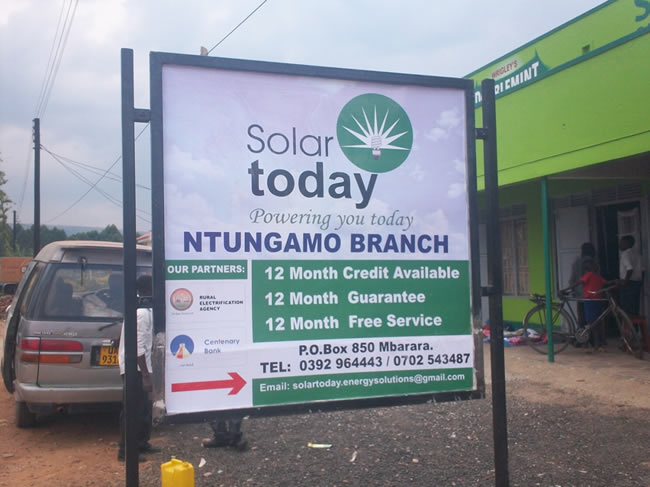Most solar panels can be classified as Monocrystalline, polycrystalline or amorphous. This is based on the silicon structure that comprises the cell. Basically a 200 watt Monocrystalline solar panel should have the same output as a 200 watt polycrystalline solar panel and a 200 watt amorphous solar panel. The main difference is the amount of area which the solar panel occupies.
Because the Monocrystalline structure is more efficient than amorphous (and only very slightly more so than polycrystalline) in turning sunlight into electricity, the amorphous solar panel of the same wattage will be physically larger. By the way, when talking about efficiency of solar panels, keep in mind that solar panel efficiency is still only about 13-18% efficient in turning sunlight into electricity. Often amorphous solar panels are less expensive than the crystalline panels.
A renewable energy system uses sunlight, wind, and/or water to produce electricity to power your home. A basic system is comprised of four basic components: solar modules and/or wind generator, charge controller, batteries and an inverter. Energy is collected at the home site by the solar panels, wind generators, or hydro-electric generators and stored in batteries for later use. When you need electricity in your home, this stored power moves from the batteries through the inverter, which converts the power from DC to AC. Any DC or AC appliance can be run on an alternative energy system, including computers, televisions, refrigerators and stereos.
The recommended size of your system depends on your power needs. If you want to completely replace your current electrical infrastructure from the utility with a solar system, the first step is to calculate your power requirements. To assist you with this process, we have designed an interactive sizing worksheet. If you design an energy efficient home, you can reduce your electricity usage dramatically. In the real world, the majority of home systems range from 2 kW to 4 kW. Where you live, whether or not you are on the grid or off the grid, and how you stay will dictate the size of your system and its total cost.
The new, state-of-the-art alternative energy systems are remarkably simple and reliable. Homeowners with average mechanical abilities can easily install and maintain their own systems. Based on experience of building and living in stand alone, energy independent homes, the professionals at Solartoday can also provide installation, maintenance and repair services.
 Solar today technician mounting the panel on the roof.
Solar today technician mounting the panel on the roof.

Solar modules have been tested in controlled settings and in the field, with results showing module lifetime is in excess of 20 years. We install panels which carry a 25 year warranty. Other system components have varied lifetimes. Batteries can last from 6 to 10 years, depending on care. The electronic components (Inverters and charge controllers), being the most sensitive, will last anywhere from 3 to 20 years.
Solar today has awide range of branch network in Mbarara, Kiruhura, Ibanda, Ntungamo, Isingiro, Bushenyi , Kamwenge and most of the towns in Western Uganda. And better still, if you are aresident of Western Uganda, you can check at any Centenary branch.

The PV module is fixed with a strong frame to the roof of a house. SolarToday uses strong panel stands to make sure you can enjoy your system for a long time. The battery is kept inside the home in a special designed energy station, so the terminals are covered to avoid any accidental touch or short-circuit. The PV, battery, lights and socket are all connected carefully to the charge-controller.
Yes, Solar today has an installment plan where one makes a small down payment of 30% of the system price and the balance is split in a twelve months period. Customers can as well pass through our partner financial institutions and SACCOs and still access our services.

